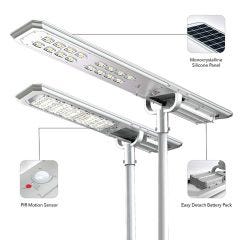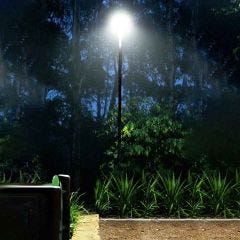Maintaining Solar Panels for Optimal Performance
To ensure your solar panels function at their best, keeping them clean is essential. Dust accumulation can hinder their ability to absorb sunlight, thus impacting their power generation efficiency. Depending on the local conditions, it's advisable to clean the panels regularly, either quarterly or annually, considering factors like rain and dust levels at the installation site. By adhering to a cleaning schedule, you can guarantee that your solar panels perform effectively.
Maximizing Sunlight Absorption by Trimming Surrounding Vegetation
The location of your solar street light panels matters significantly. More direct sunlight translates to increased solar power generation. To enhance sunlight exposure, it's crucial to remove any objects that cast shadows on the panels. Regularly trimming surrounding shrubs and trees is essential as they tend to grow and create shade over time. Pruning these obstructive elements once a month will ensure that your solar street lights can fully utilize the available sunlight.
Battery Maintenance and Replacement
In general, LED light sources and solar panels require minimal maintenance throughout their service life. However, batteries may start to decline in performance after about five years. If your solar street light is still operational beyond its service life, replacing the battery can give it a new lease on life. Typically, solar street light batteries last anywhere from one to three years before they need replacement. Indications of a failing battery include lights staying on for shorter periods, dimmed light output, or lights not functioning at all. Monitoring the battery's performance and timely replacement will keep your solar street lights shining brightly.
Checking Wires and Connections
Solar street lights offer the advantage of not needing buried electrical wires. However, there are still wires that require attention. If your fixtures are separate from the solar panels, a wire connects the two parts, which might be vulnerable to wildlife. Additionally, interior wires linking the on-fixture solar panel to the batteries can also be at risk. Although these wires are usually well-protected, wildlife may still access and damage them. To ensure the longevity of your solar street lights, inspecting for damaged wires and broken connections every three to six months is vital. Addressing any irregularities or issues promptly will prevent minor problems from causing system shutdowns.













